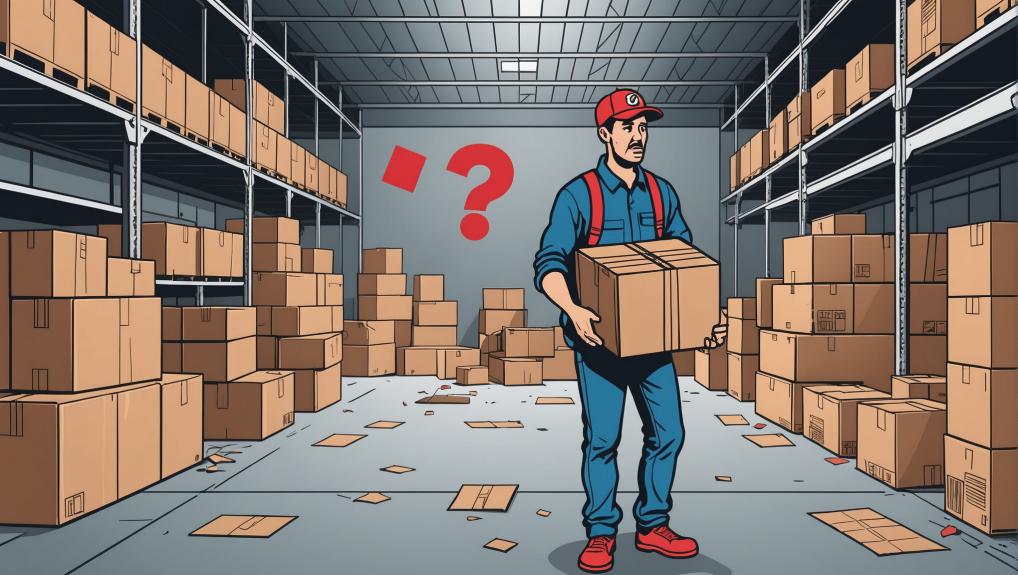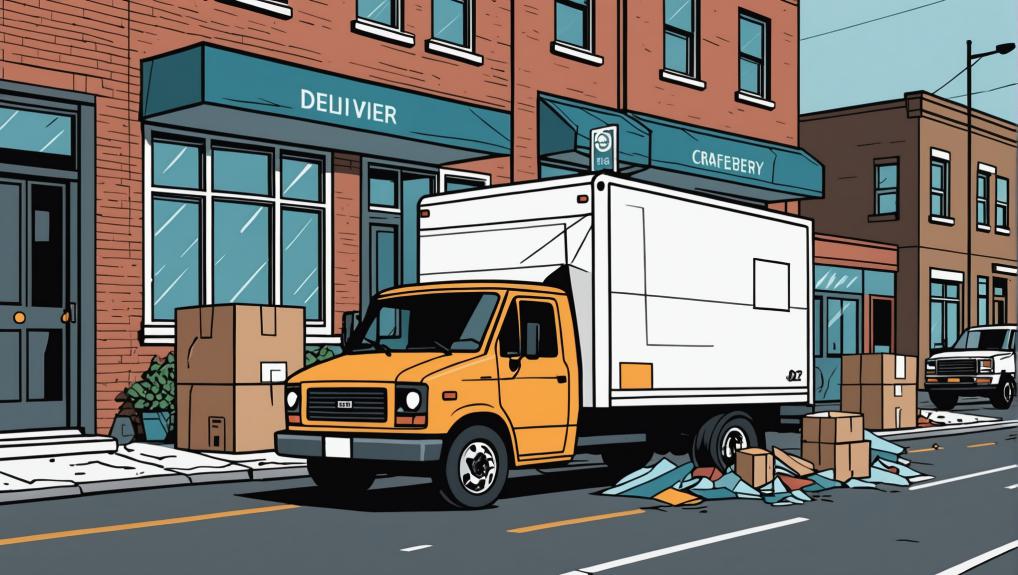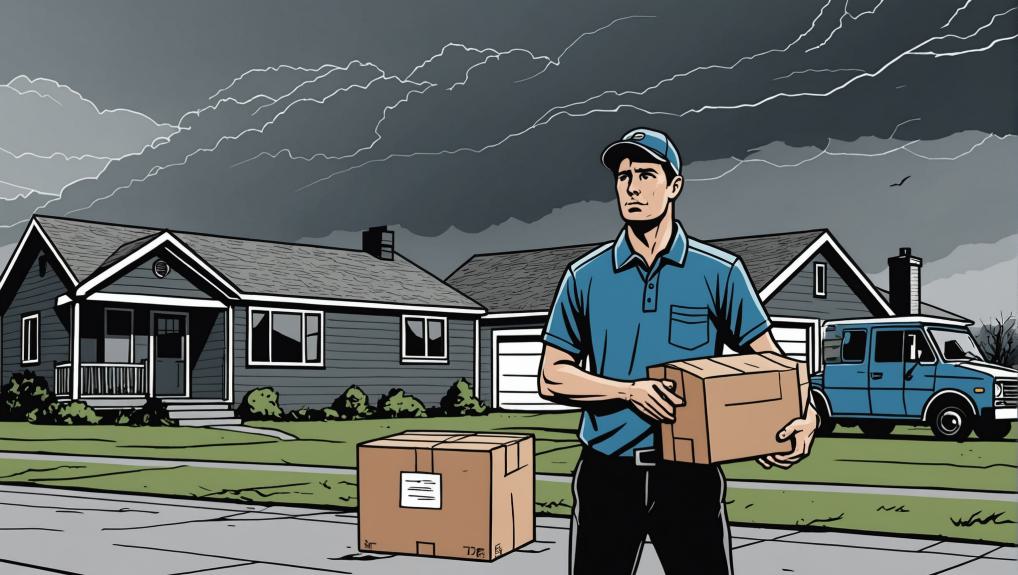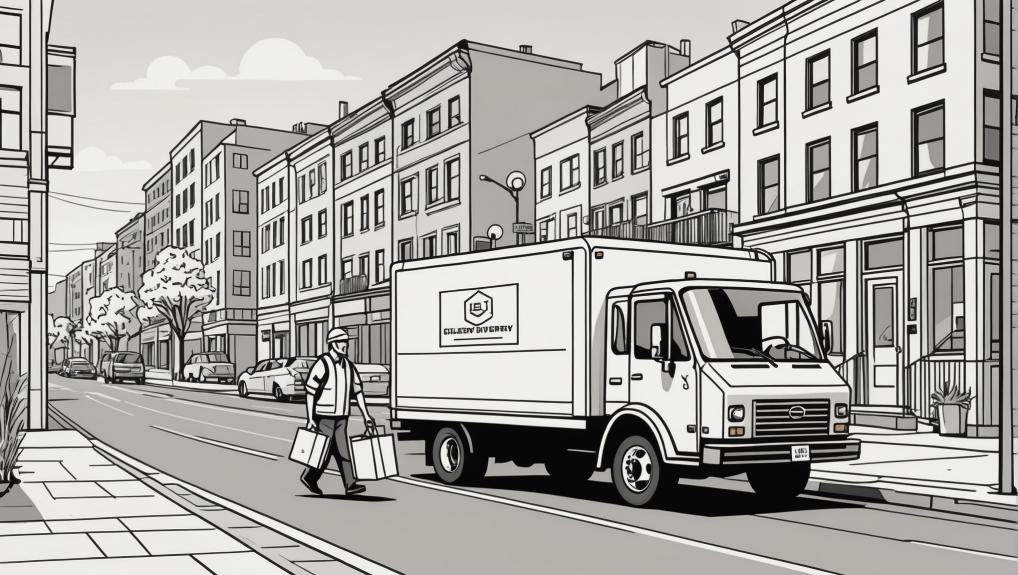Imagine eagerly waiting for a package, only to receive a notification that it’s been delayed—this is a delivery exception. It’s frustrating, right? A delivery exception occurs when an unexpected event prevents your package from arriving on time.
Whether it’s bad weather, an incorrect address, or a failed delivery attempt, these interruptions can be stressful and inconvenient.
The uncertainty of not knowing when your package will arrive adds to the frustration, especially when the original delivery date has passed.
But don’t worry—I’ll explain exactly what a delivery exception is, why it happens, and what you can do about it. By understanding these delays, you can better manage expectations and find solutions more quickly.
Key Takeaways:
- Delivery exceptions are unexpected delays that occur during shipping, often due to factors like incorrect addresses or severe weather.
- Causes of delivery exceptions include internal errors, external factors, and customer-related issues, impacting package delivery timelines.
- Managing delivery exceptions involves proactive tracking, communication, and addressing issues like incorrect information or failed delivery attempts.
- Preventing exceptions requires accurate address input, reliable carriers, and advanced tracking to minimize disruptions and improve delivery reliability.
What Is a Delivery Exception?

A delivery exception is a notification indicating that an unexpected event has temporarily delayed a package, preventing it from arriving on the originally scheduled date. This alert doesn’t mean the package is undeliverable, just delayed.
Common causes of delivery exceptions include internal, external, and customer-related factors. Internal issues might involve errors like incorrect labeling or sorting mistakes within the shipping company.
External factors, outside the company’s control, can include severe weather, traffic jams, and customs delays for international shipments. Customer-related issues often involve incorrect or incomplete addresses or scenarios where the recipient isn’t available to receive the package.
When a delivery exception occurs, the tracking number becomes crucial for monitoring the package’s status and contacting the carrier for more information.
What Do Local Post Office Delivery Exceptions Mean?
Local post office delivery exceptions indicate issues at the local post office that may delay a package’s arrival.
These exceptions can stem from various factors such as incorrect addresses, problems with tracking numbers, or delays in customs clearance.
One common cause is an incorrect or incomplete address, requiring resolution before delivery can proceed. Recipient unavailability, especially when a signature is needed, is another frequent issue. Damaged or unreadable shipping labels can also delay processing.
Severe weather conditions may hold up delivery until it’s safe. Animal interference, like a dog blocking access, can lead to exceptions too.
To resolve these issues, check the tracking information to understand the problem. Contacting the carrier can provide the necessary details for prompt resolution. Sometimes, arranging for package pick-up directly from the post office can speed up delivery.
Types of Delivery Exceptions

Delivery exceptions arise when unexpected events disrupt the standard delivery process, causing delays or requiring special handling of a package. Here are several types of delivery exceptions that can impact the timely arrival of your shipment:
- Incorrect Address: Carriers can’t deliver packages without accurate information, leading to rerouting or returns, and causing significant delays.
- Damaged Label: Unreadable package details can halt the delivery process until the issue is corrected.
- Weather Delays: Severe conditions like snowstorms or hurricanes impede transportation, affecting package tracking and timelines.
- Customs Delays: Prevalent with international shipments, issues like incomplete documentation or regulatory inspections can stall the process.
- Failed Delivery Attempts: Occur when recipients are unavailable to receive packages, especially if a signature is required. These packages may be held at a local facility for later pick-up.
- Other Types: Include damaged or lost packages, security or regulatory delays, animal interference, holidays, vehicle issues, and high volume periods during peak seasons.
Understanding these types of delivery exceptions can help manage expectations and prepare for potential delays in receiving shipments.
What Causes Delivery Exceptions?
Delivery exceptions stem from various factors, which can be categorized into internal, external, and customer-related issues. Addressing these helps reduce disruptions and improve customer satisfaction.
Internal Factors:
Within the shipping company’s control, issues like incorrect labeling or sorting can misroute packages. Technology failures, such as broken scanners, also disrupt delivery status updates.
External Factors:
Beyond the company’s control, severe weather conditions like snowstorms or floods delay transportation.
Traffic congestion, accidents, and mechanical problems with delivery vehicles further complicate timely deliveries. International shipments may face customs delays due to regulatory issues or missing documentation.
Customer-Related Factors:
Incorrect or incomplete addresses provided by the sender make accurate delivery impossible. If recipients are unavailable to accept a package, or if they refuse delivery, exceptions occur.
Other causes include package damage or animal interference, such as a dog obstructing access to the delivery location.
Understanding these causes enables proactive measures to minimize delivery exceptions, ensuring smoother shipping experiences.
For instance, companies can invest in advanced tracking systems and staff training to mitigate internal issues, while optimizing delivery routes to handle external challenges more effectively.
What Happens When Your Package Has a Delivery Exception?

When your package encounters a delivery exception, it means an unexpected event has temporarily halted its progress.
The carrier will update the tracking status to reflect this, with reasons such as ‘incorrect address,’ ‘weather delay,’ or ‘recipient not available.’ This update keeps both the sender and recipient informed about the delay.
After a delivery exception, the package often experiences a delay and may be delivered on the next business day or once the issue is resolved. If the problem, like an incorrect address, can’t be fixed, the package might be returned to the sender.
Alternatively, if a signature is required and the recipient is unavailable, the package may be held at a local facility for pickup.
Customers may receive notifications via email, text, or app, depending on the carrier and chosen services. Understanding these processes helps manage expectations and ensures timely resolution.
What Should I Do When a Delivery Exception Occurs?
First, check the tracking details provided by the carrier. This shows the package’s location and the reason for the delay.
Next, contact the carrier for more information. Understanding the issue is crucial for providing corrections. For example, if the delay is due to an incorrect address or a damaged label, give the carrier the correct information immediately.
Inform the recipient about the delay. Explain the cause and the steps being taken to fix it. Transparency maintains trust, especially when weather impacts delivery. Apologize for the inconvenience and thank them for their patience.
If the package can’t be delivered or arrives damaged, discuss options with the recipient, like issuing a refund or resending the item. Verify if shipping insurance covers these costs.
Lastly, monitor the situation by setting up tracking alerts and delivery notifications. This ensures you stay updated and can act quickly if more issues arise.
How to Avoid Delivery Exceptions

Avoiding delivery exceptions is key to customer satisfaction and operational efficiency. Here are some proven strategies:
1. Guarantee Accurate Address Information:
Use address verification tools during checkout and incorporate autocomplete features. This reduces errors from incorrect or incomplete addresses.
2. Effective Communication:
Provide real-time tracking updates and proactive notifications via email, SMS, and mobile apps. Inform customers about their package status so they can make necessary arrangements. Clear instructions about delivery schedules and potential delays enhance this communication.
3. Partner with Reliable Carriers:
Engage multiple shipping companies for flexibility. Select the most efficient carrier based on location and service reliability. Experienced couriers, especially for international shipments, ensure smooth customs clearance and documentation.
4. Utilize Advanced Tracking Technologies:
Employ AI-powered route optimization to predict and prevent potential issues. Offer flexible delivery options, like scheduled delivery windows or alternative pickup locations, to accommodate customers’ availability and reduce failed delivery attempts.
These strategies collectively minimize delivery exceptions, ensuring a seamless delivery experience and fostering customer loyalty.
Why Local Post Office Delivery Is Prone to Exceptions
Local post office deliveries are prone to exceptions due to various factors that disrupt the final leg of the process.
Incorrect addresses are a common issue; if the address is incomplete or inaccurate, the delivery can’t be completed, leading to the package being held until the correct details are provided or the item is returned to the sender.
Weather conditions also play a significant role. Severe weather events like snowstorms or heavy rain can delay deliveries, especially when the final mile is the most challenging.
If the recipient is unavailable to sign for a package requiring a signature, the delivery can’t be completed, resulting in the package being held at the post office for later pickup or another delivery attempt.
Damaged or unreadable labels can prevent proper processing, causing delays. In urban areas, the absence of a safe place to leave the package can also lead to postponements.
Understanding these factors helps explain why local post office deliveries are more prone to exceptions, emphasizing the importance of accurate information and awareness of potential disruptions.
Frequently Asked Questions
How Long Does It Take to Resolve a Delivery Exception?
Resolving a delivery exception can take anywhere from a few hours to several days. The timeframe depends on the underlying cause, such as customs delays, incorrect addresses, or weather disruptions, and the efficiency of the logistics provider, like FedEx or UPS.
Is a Delivery Exception the Same as a Lost Package?
No, a delivery exception isn’t the same as a lost package. A delivery exception indicates a temporary issue that delays delivery, such as inclement weather or an incorrect address. In contrast, a lost package means the item can’t be located and may never reach its destination.
Conclusion
A delivery exception happens when unexpected circumstances prevent a package from arriving on schedule. Reasons include incorrect addresses, severe weather, customs issues, or the recipient not being available.
Managing these exceptions well is crucial for keeping customers happy and ensuring operational efficiency. Understanding causes and adopting preventive strategies can enhance the reliability of delivery services.
Local post offices are particularly prone to such disruptions and benefit greatly from effective exception management.

